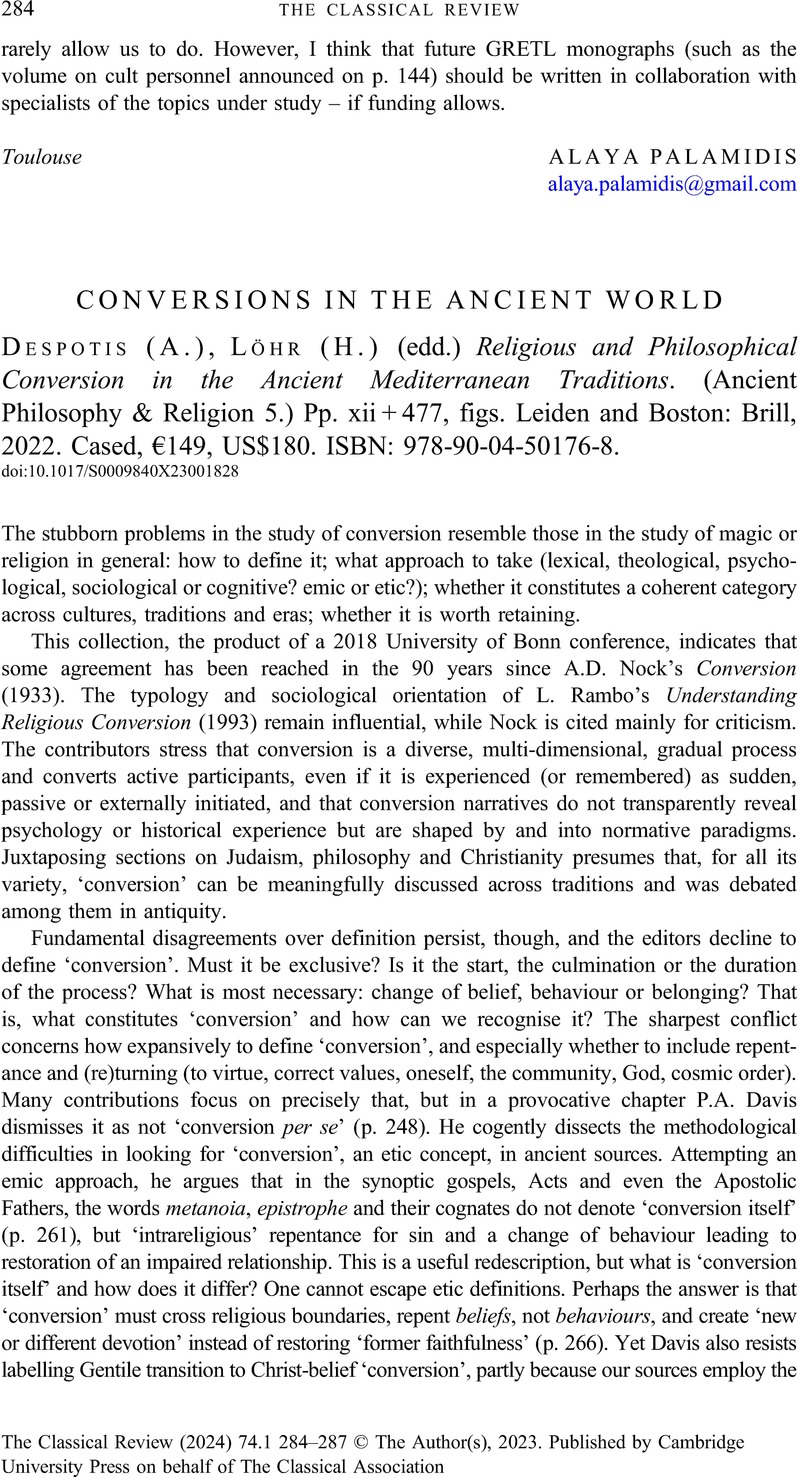No CrossRef data available.
Article contents
CONVERSIONS IN THE ANCIENT WORLD - (A.) Despotis, (H.) Löhr (edd.) Religious and Philosophical Conversion in the Ancient Mediterranean Traditions. (Ancient Philosophy & Religion 5.) Pp. xii + 477, figs. Leiden and Boston: Brill, 2022. Cased, €149, US$180. ISBN: 978-90-04-50176-8.
Review products
(A.) Despotis, (H.) Löhr (edd.) Religious and Philosophical Conversion in the Ancient Mediterranean Traditions. (Ancient Philosophy & Religion 5.) Pp. xii + 477, figs. Leiden and Boston: Brill, 2022. Cased, €149, US$180. ISBN: 978-90-04-50176-8.
Published online by Cambridge University Press: 04 September 2023
Abstract
An abstract is not available for this content so a preview has been provided. Please use the Get access link above for information on how to access this content.

- Type
- Reviews
- Information
- Copyright
- Copyright © The Author(s), 2023. Published by Cambridge University Press on behalf of The Classical Association



